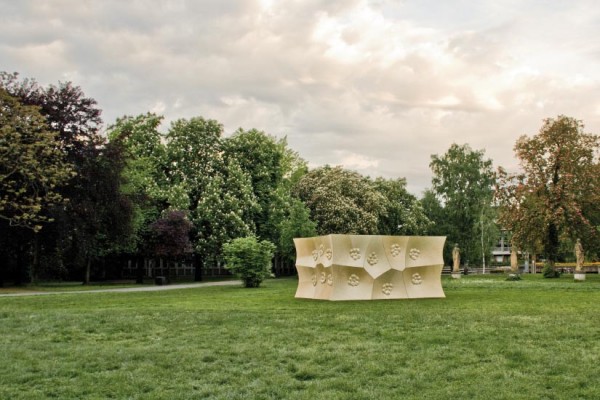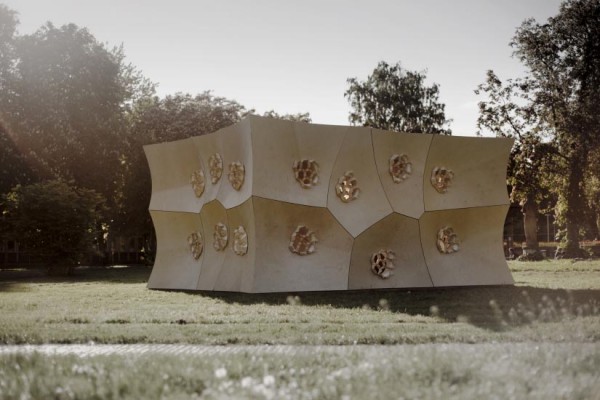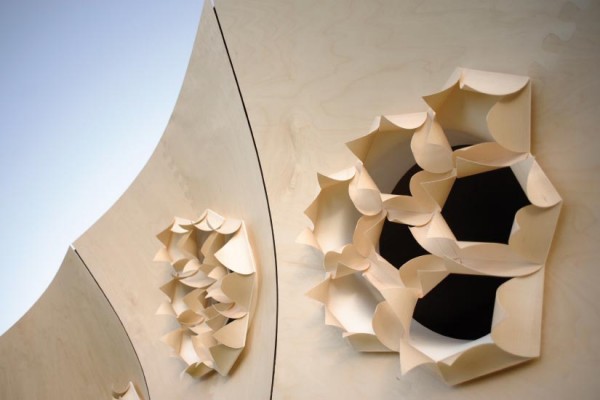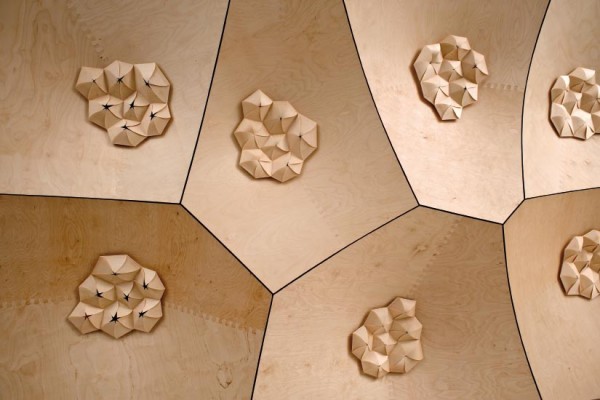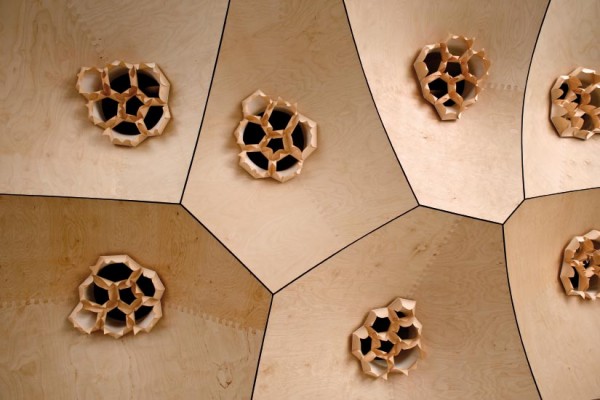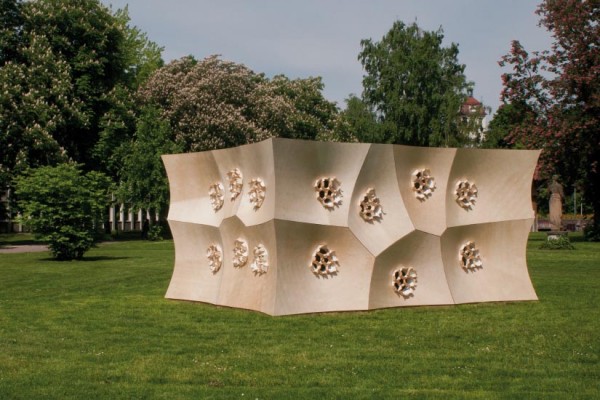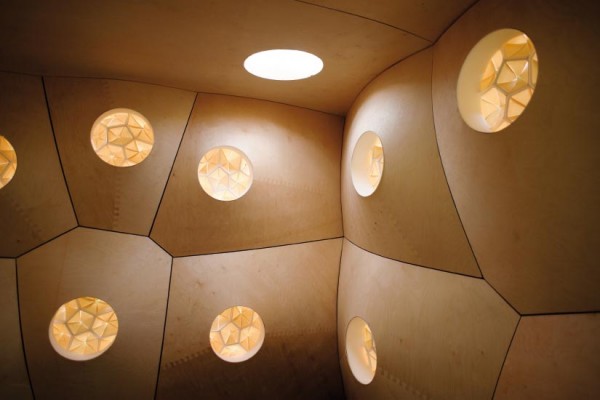The project HygroSkin – Meteorosensitive Pavilion explores a novel mode of climate-responsive architecture. While most attempts towards environmental responsiveness heavily rely on elaborate technical equipment superimposed on otherwise inert material constructs, this project uses the responsive capacity of the material itself. The dimensional instability of wood in relation to moisture content is employed to construct a metereosensitive architectural skin that autonomously opens and closes in response to weather changes but neither requires the supply of operational energy nor any kind of mechanical or electronic control. Here, the material structure itself is the machine.
The travelling pavilion’s modular wooden skin is designed and produced utilizing the self-forming capacity of initially planar plywood sheets to form conical surfaces based on the material’s elastic behavior. Within the deep, concave surface of each robotically fabricated module a weather-responsive aperture is placed. Materially programming the humidity-responisve behaviour of these apertures opens up the possibility for a strikingly simple yet truly ecologically embedded architecture in constant feedback and interaction with its surrounding environment. The responsive wood-composite skin adjusts the porosity of the pavilion in direct response to changes in ambient relative humidity. These climatic changes – which form part of our everyday live but usually escape our conscious perception – trigger the silent, material-innate movement of the wooden skin. This subtle yet constant modulation of the relationship between the pavilion’s exterior and interior provides for a unique convergence of environmental and spatial experiences.
The project by Achim Menges at the Institute for Computational Design of the Stuttgart University was commissioned by the FRAC Centre Orleans for its renowned permanent collection.

